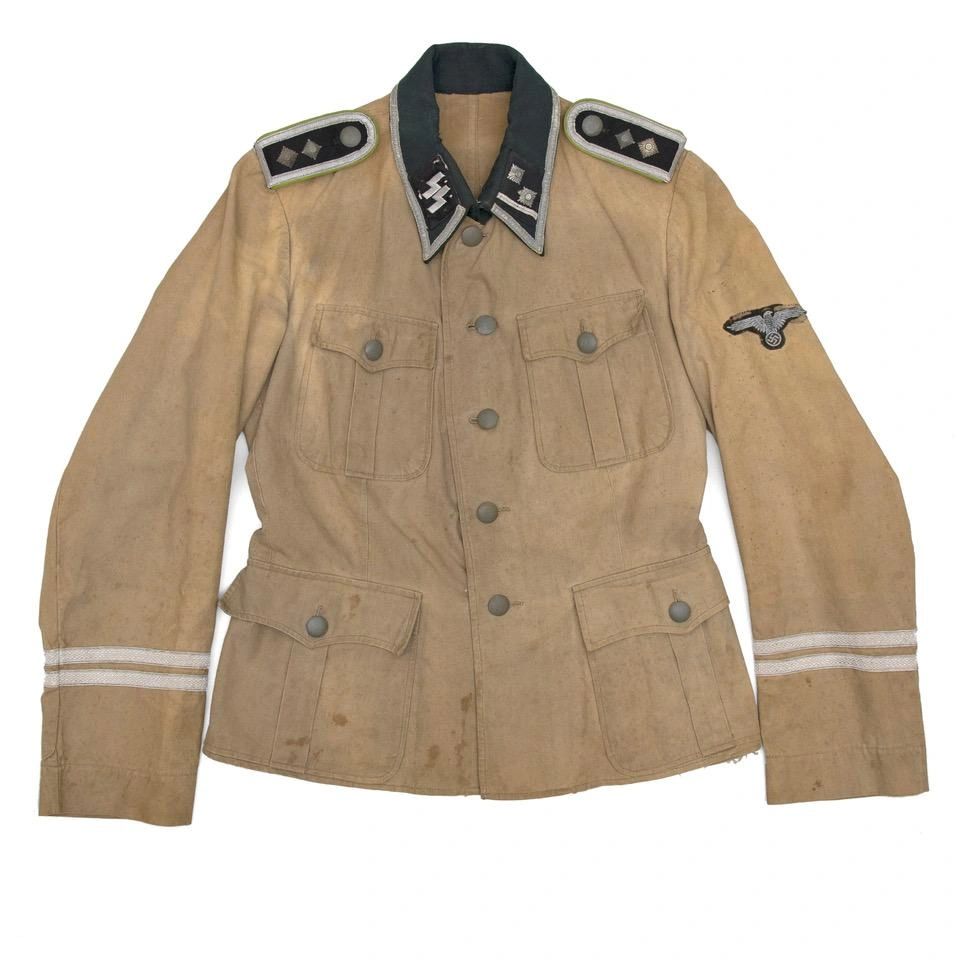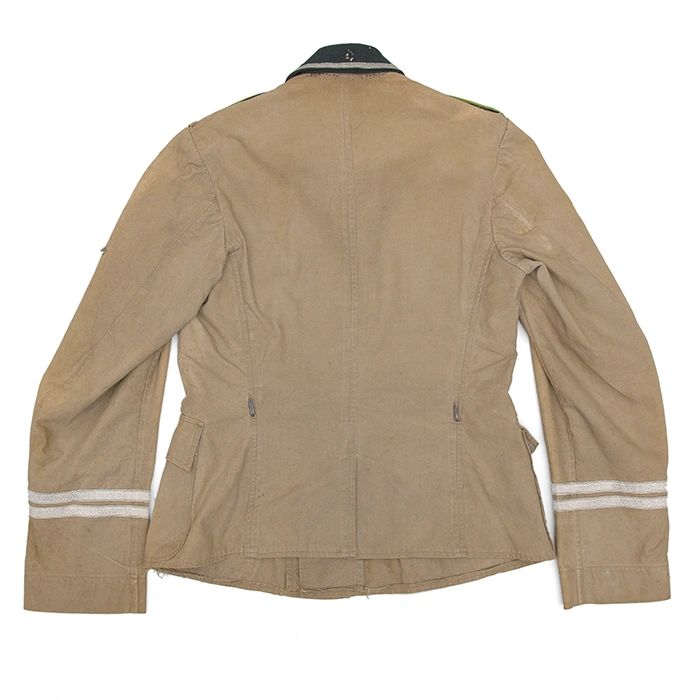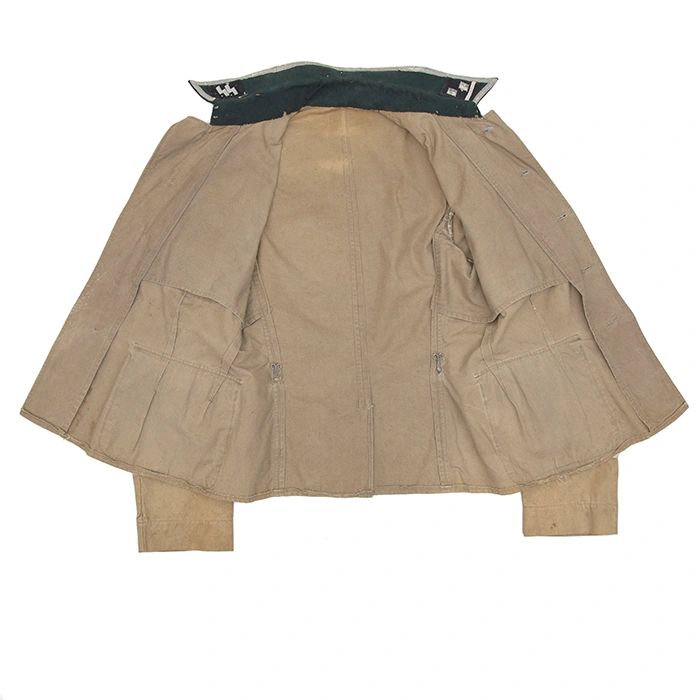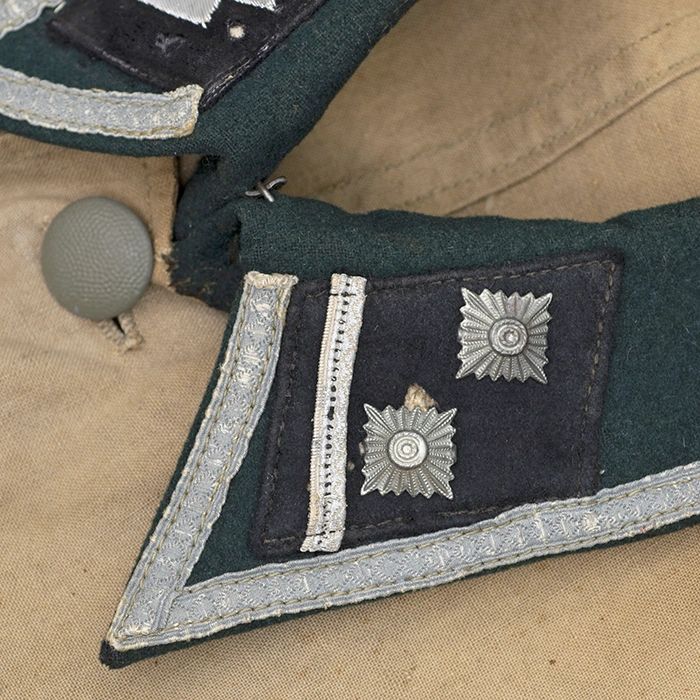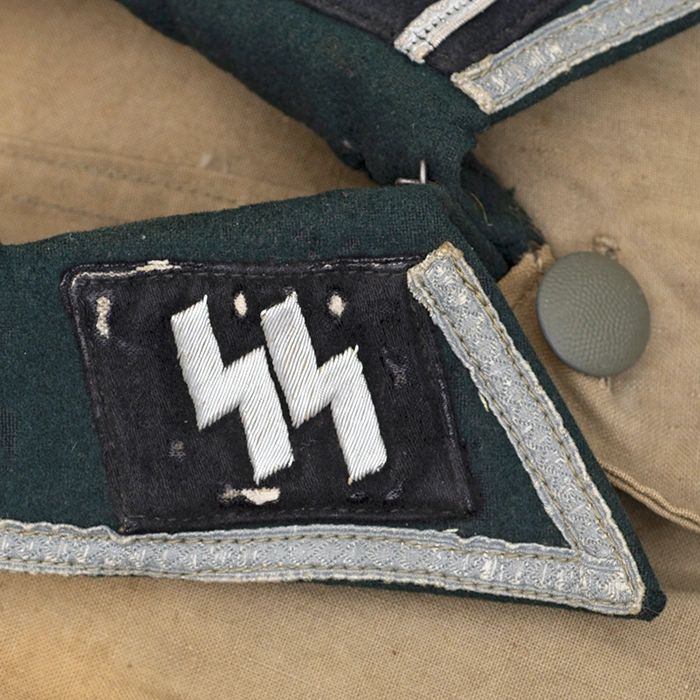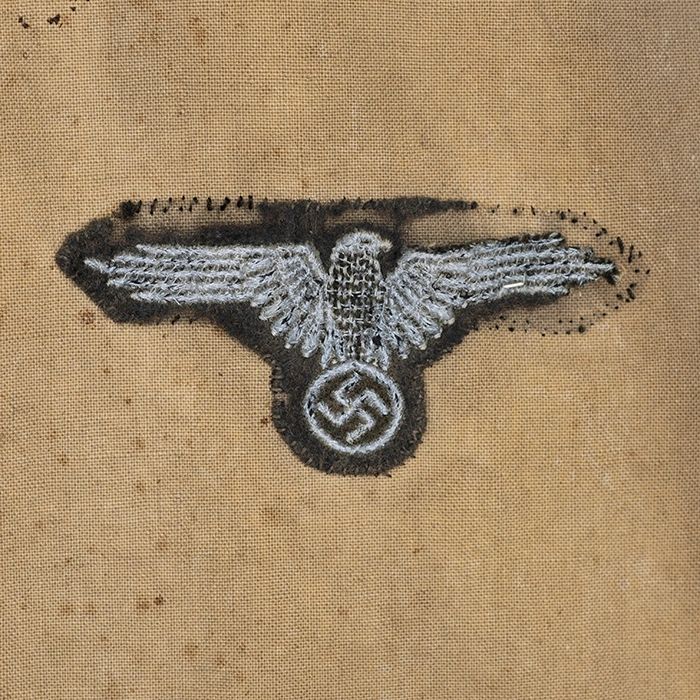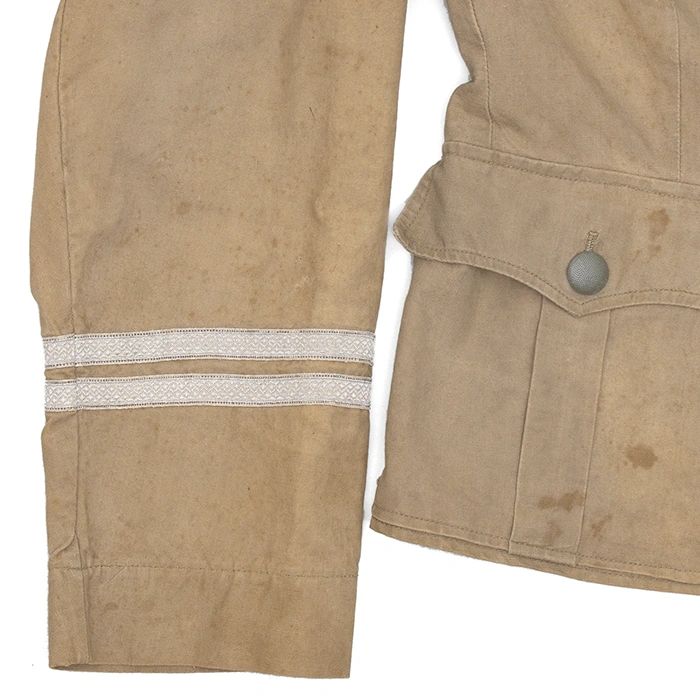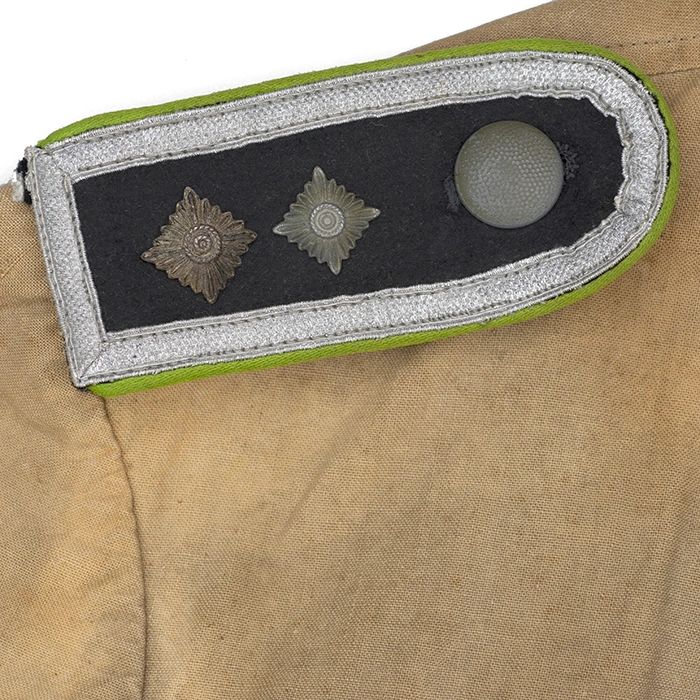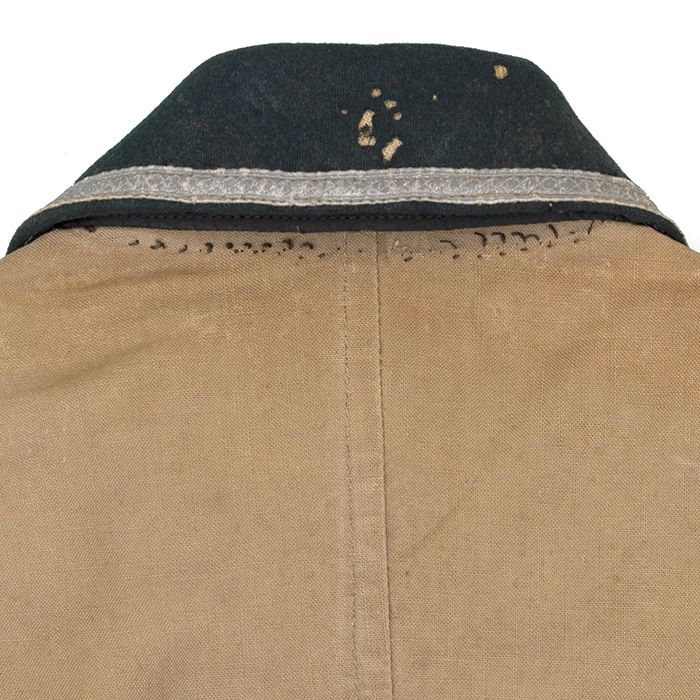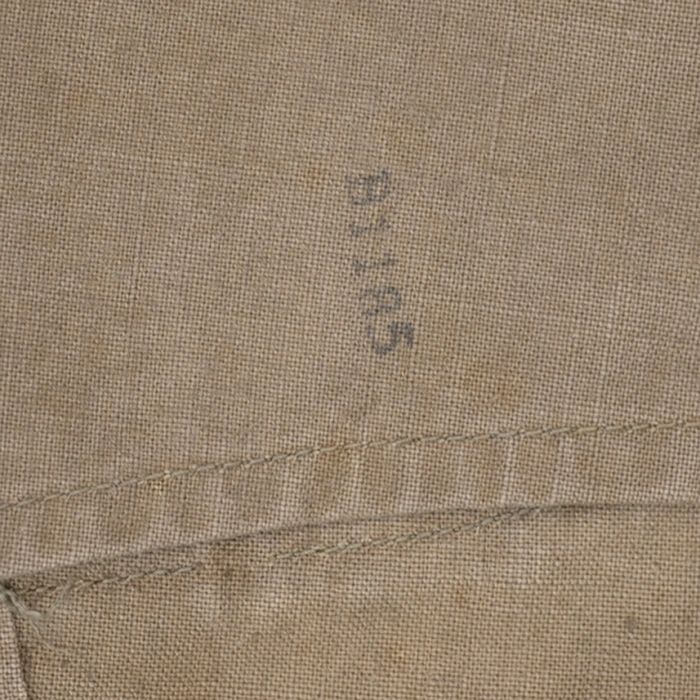Description
Striking lightweight four pocket service blouse for a Waffen-SS Hauptscharführer und Spiess. A unique example that was brought back by a U.S. Army soldier. Constructed of a light grey colored cotton which has faded and age yellowed. Dark green stand and fall collar with the fashionable sharply pointed collar. There are two sets of black painted hooks and eyes, and blouse has a five button front closure and four pleated patch pockets. Sleeve ends are without cuffs and are in a fixed position. Blouse is unlined, two large hooks are sewn to either hip to support wear with the belt, shoulder strap bridles of the same material are hand tacked to each shoulder, with the full complement of field grey painted pebbled buttons. The lower right pocket button head has separated from the shank but was placed for the photographs (it is in the lower right pocket).The hand embroidered aluminum wire runic collar patch on moleskin and the matching wool rank tab are machine stitched to the collar, the rank pips were missing when found but have been replaced with appropriate period examples having prongs fitting exactly where the originals had been while the metallic rank bar is the original. The lower edge of the collar has machine applied non metallic NCO tresse, each sleeve has a double row of parade style tresse ‘piston rings’ machine applied with the ends tucked into the rear sleeve seams. The machine embroidered sleeve eagle is hand sewn to the sleeve with black thread, the variant shoulder straps did not originally come with the service blouse but were added for the photos and will be included, each strap has two rank pips, machine sewn metallic NCO rank tresse and rayon piping appropriate for Waffen-SS Jäger troops, their condition matches well, from a condition perspective, their is an internal laundry stamping. The blouse saw a lot of service use with the fabric being faded, stained and with light mottling. There are some small holes to the lower front waist but this area is completely concealed when the garment is buttoned. There is a small area with moth holes to the rear of the wool collar and another hole at the right neckline. The runic collar patch shows some damage to the wool backing, the rank bar center black stripe is abraded, the lower rear collar edge has separated from the body, the edges of the sleeve eagle have ‘retreated’ and its right quadrants are presently held into place with a safety pin. There is some unraveling in areas to the raw portion of the lower skirt hem, it should be possible to research the American soldier’s unit history, full particulars about the identify of the soldier and the known history of the piece will be supplied to the buyer, please paste the link before for discussion. https://www.wehrmacht-awards.com/forums/forum/wehrmacht-uniforms-and-equipment/tony-barto-ss-uniforms-and-insignia-forum/11729870-ss-summer-tunic-for-opinions-please CLICK HERE to view more images of this item! This piece is a consignment item and is subject to the terms listed on the website. Guaranteed original. The Schutzstaffel (SS) was a major paramilitary organization under Adolf Hitler in Nazi Germany, and later throughout German-occupied Europe during World War II. It began with a small guard unit known as the Saal-Schutz (“Hall Security”) made up of NSDAP volunteers to provide security for party meetings in Munich. In 1925, Heinrich Himmler joined the unit, which had by then been reformed and given its final name. Under his direction (1929–45) it grew from a small paramilitary formation during the Weimar Republic to one of the most powerful organizations in Nazi Germany. From 1929 until the regime’s collapse in 1945, the SS was the foremost agency of security, surveillance, and terror within Germany and German-occupied Europe. The two main constituent groups were the Allgemeine SS (General SS) and Waffen-SS (Armed SS). The Allgemeine SS was responsible for enforcing the racial policy of Nazi Germany and general policing, whereas the Waffen-SS consisted of combat units within Nazi Germany’s military. A third component of the SS, the SS-Totenkopfverbände (SS-TV), ran the concentration camps and extermination camps. Additional subdivisions of the SS included the Gestapo and the Sicherheitsdienst (SD) organizations. They were tasked with the detection of actual or potential enemies of the Nazi state, the neutralization of any opposition, policing the German people for their commitment to Nazi ideology, and providing domestic and foreign intelligence. Free shipping ANYWHERE IN THE WORLD & I don’t charge PayPal fees like some of the other guys!
